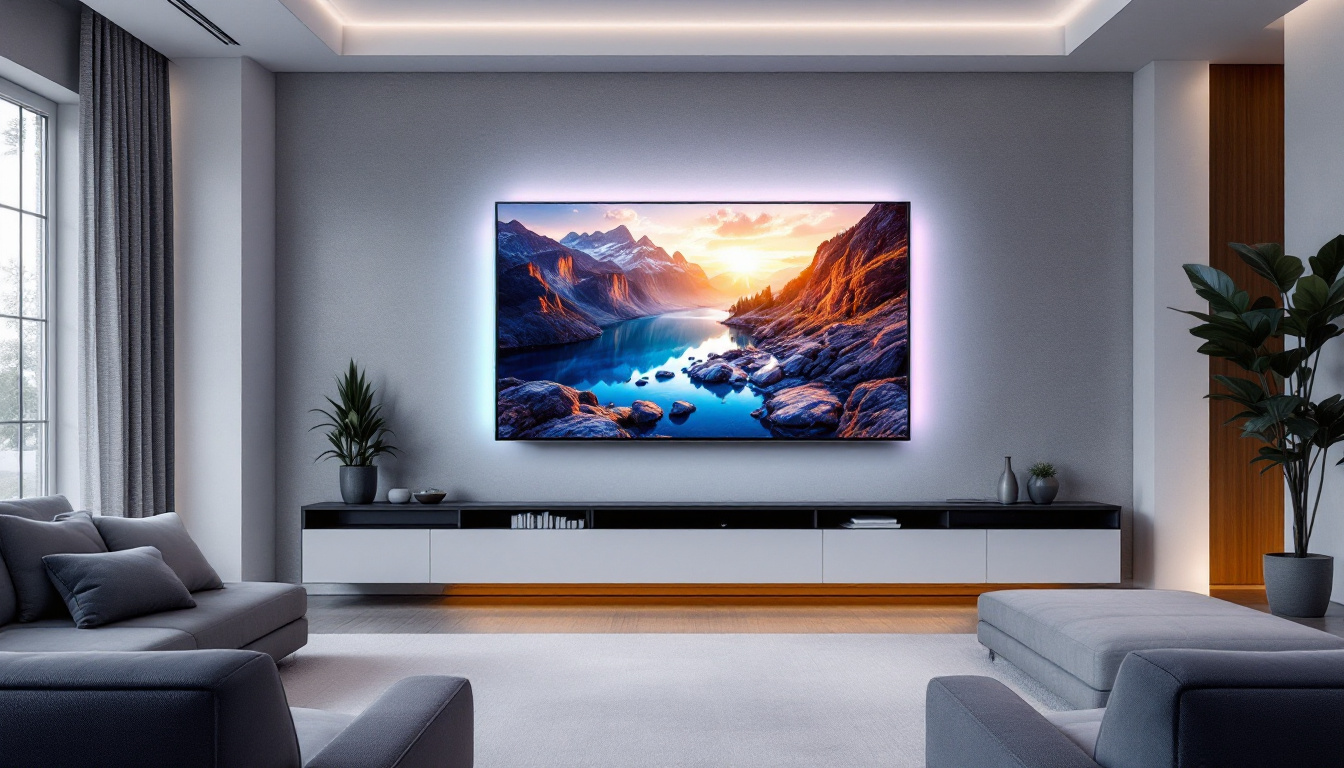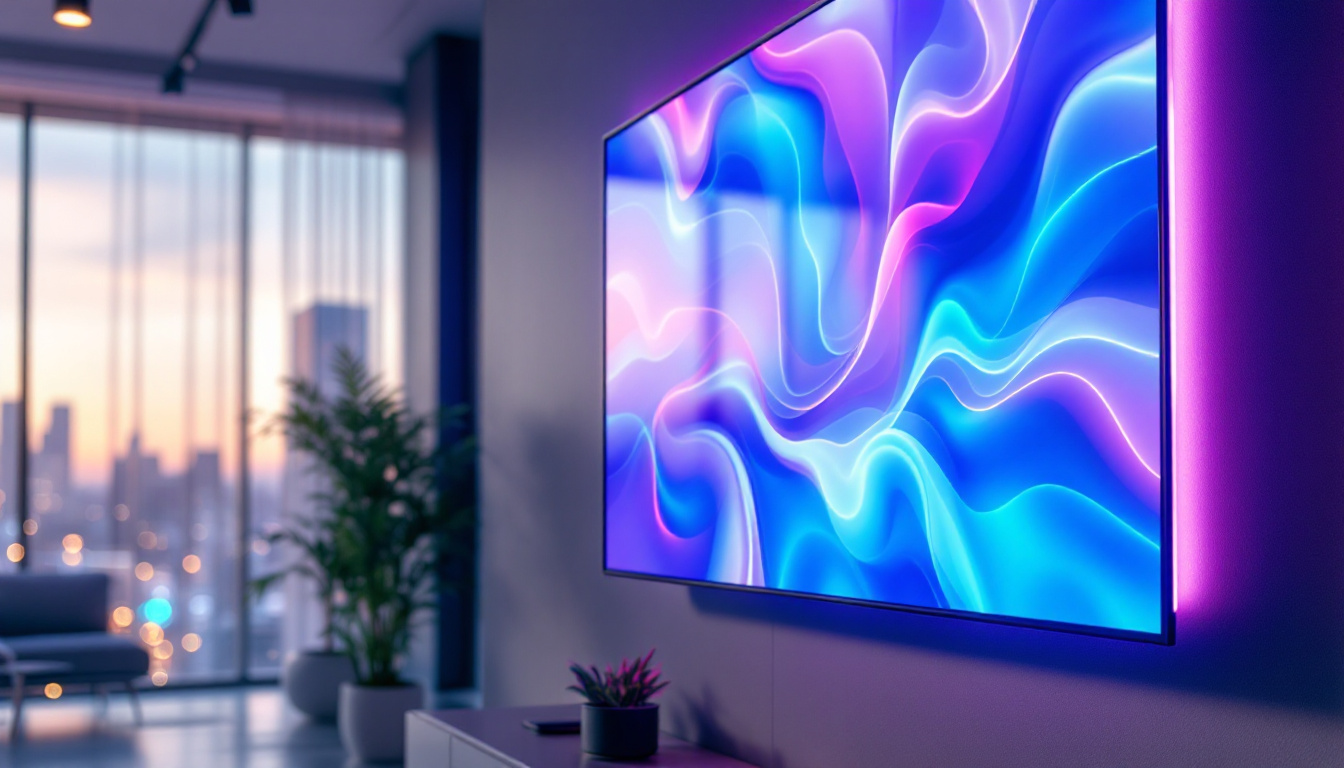The evolution of display technology has transformed the way we consume visual content. Among the various types of displays available today, plasma displays and LED displays have garnered significant attention. While both technologies serve the same fundamental purpose, they operate on different principles and offer distinct advantages and disadvantages. This article delves into the intricacies of plasma and LED displays, illuminating their features, benefits, and ideal applications.
Understanding Plasma Displays
Plasma displays utilize a unique technology that involves small cells filled with noble gases. When an electrical current passes through these gases, they become ionized and emit ultraviolet light. This ultraviolet light then excites phosphor coatings on the inside of the display, producing visible light. The result is a vibrant and dynamic image that can be viewed from wide angles. This technology was particularly revolutionary in the early 2000s, as it allowed for larger screen sizes without the bulkiness of traditional CRT displays, paving the way for the modern home theater experience.
How Plasma Displays Work
The operation of plasma displays is rooted in the concept of gas discharge. Each pixel on a plasma screen is made up of three sub-pixels, corresponding to the primary colors: red, green, and blue. By adjusting the intensity of the light emitted from each sub-pixel, a wide range of colors can be produced. This ability to create deep blacks and rich colors makes plasma displays particularly appealing for watching movies and playing video games. Additionally, the technology allows for a more uniform brightness across the screen, which is crucial for maintaining visual fidelity in high-definition content.
Advantages of Plasma Displays
One of the most notable advantages of plasma displays is their superior color accuracy and contrast ratios. The ability to produce true blacks enhances the overall viewing experience, especially in dark scenes. Additionally, plasma displays typically have faster refresh rates, which reduces motion blur during fast-paced action sequences. This is particularly beneficial for sports enthusiasts and gamers who require a display that can keep up with rapid movements without compromising image quality.
Another key benefit is the wide viewing angles that plasma displays offer. Unlike many LCD screens, which can suffer from color distortion when viewed from an angle, plasma displays maintain consistent color and brightness levels, making them ideal for larger viewing areas or gatherings. This characteristic is especially appreciated in home theater setups where multiple viewers might be seated at varying distances from the screen, ensuring that everyone enjoys the same high-quality visuals regardless of their position.
Disadvantages of Plasma Displays
Despite their numerous advantages, plasma displays are not without their drawbacks. One significant concern is their susceptibility to burn-in, where static images can become permanently etched into the screen if displayed for extended periods. This phenomenon can be particularly problematic for users who frequently watch news channels or play video games with static HUDs. Manufacturers have made strides in mitigating this issue, but it remains a consideration for potential buyers.
Moreover, plasma displays tend to consume more power than their LED counterparts, leading to higher energy costs over time. They are also generally heavier and bulkier, which can make installation and transportation more challenging. This bulkiness can be a deterrent for those looking for sleek, wall-mounted options. Despite these challenges, many enthusiasts still prefer plasma displays for their unparalleled picture quality, often viewing them as a worthy investment for serious home entertainment systems. The debate between plasma and newer technologies continues, with many loyalists advocating for the unique qualities that plasma screens bring to the viewing experience.
Exploring LED Displays
LED displays, or Light Emitting Diode displays, represent a more recent advancement in display technology. Unlike plasma displays, LED screens utilize an array of tiny light-emitting diodes to produce images. These diodes can be configured in various ways, including edge-lit and full-array backlighting, to enhance brightness and color accuracy. The versatility of LED technology has made it a popular choice not only for televisions but also for digital signage, smartphones, and computer monitors, showcasing its adaptability across different applications.
How LED Displays Work
LED displays function by illuminating liquid crystal displays (LCDs) with LED backlighting. In edge-lit models, LEDs are placed along the edges of the screen, while full-array models feature a grid of LEDs behind the entire display. The liquid crystals modulate the light to create images. This technology allows for thinner screens and lower power consumption compared to plasma displays. Moreover, the rapid response times of LED displays contribute to smoother motion rendering, making them particularly advantageous for fast-paced content such as sports and action movies.
Advantages of LED Displays
One of the primary advantages of LED displays is their energy efficiency. They consume significantly less power than plasma displays, making them a more environmentally friendly option. This efficiency also translates to lower electricity bills for consumers. Additionally, LED displays often come with a longer lifespan, with many models boasting over 50,000 hours of usage before significant degradation occurs. This longevity not only benefits consumers but also reduces electronic waste, aligning with sustainable practices.
LED displays are also less prone to burn-in, which makes them a safer choice for users who frequently display static images. Furthermore, advancements in LED technology have led to improved brightness levels and color accuracy, making them suitable for various lighting conditions. This adaptability is particularly beneficial in commercial settings where displays may be subjected to bright ambient light, ensuring that the content remains vibrant and legible regardless of the environment.
Disadvantages of LED Displays
Despite their many benefits, LED displays do have some limitations. One major drawback is their contrast ratio, which typically falls short of that offered by plasma displays. While LED technology has improved, achieving true blacks can still be a challenge, especially in edge-lit models. This limitation can affect the viewing experience, particularly in dark scenes where depth and detail are crucial for immersion.
Additionally, LED displays may suffer from limited viewing angles, particularly in lower-quality models. This can lead to color distortion and reduced brightness when viewed from the side, which may not be ideal for group viewing situations. As a result, consumers are often encouraged to consider the placement of their displays and the typical viewing arrangements to ensure an optimal experience. Furthermore, while high-end models are increasingly addressing these issues with advanced technologies like quantum dots and OLED integration, the price point can be a barrier for some consumers, making it essential to weigh the benefits against the costs.
Comparing Plasma and LED Displays
When choosing between plasma and LED displays, several factors should be considered. Each technology has its strengths and weaknesses, and the best choice often depends on individual preferences and usage scenarios.
Picture Quality
Picture quality is often the most critical factor for consumers. Plasma displays excel in color accuracy and contrast, providing a more immersive viewing experience, particularly in dark environments. Conversely, LED displays offer improved brightness, making them suitable for well-lit rooms.
Energy Consumption
Energy efficiency is another important consideration. LED displays are generally more energy-efficient than plasma displays, resulting in lower operational costs. This aspect can be particularly appealing for those who plan to use their displays frequently or for extended periods.
Longevity and Durability
In terms of longevity, LED displays tend to have a longer lifespan compared to plasma displays. While plasma screens may degrade over time, leading to a reduction in brightness and color accuracy, LED displays can maintain their performance for years with proper care. Additionally, the risk of burn-in is significantly lower with LED technology, making it a safer choice for varied content consumption.
Applications of Plasma and LED Displays
The applications of plasma and LED displays vary significantly based on their unique characteristics. Understanding these applications can help consumers make informed decisions when selecting a display for their needs.
Home Entertainment
For home entertainment, plasma displays are often favored for their superior picture quality, particularly for movie watching and gaming. The deep blacks and vibrant colors enhance the cinematic experience, making them popular among film enthusiasts. However, LED displays have gained traction in this area due to their energy efficiency and versatility, making them suitable for a broader range of content.
Commercial Use
In commercial settings, LED displays are often the preferred choice. Their energy efficiency, durability, and lower maintenance costs make them ideal for digital signage, advertising, and presentations. Additionally, the ability to create large-scale displays using modular LED panels allows for flexibility in design and application.
Outdoor Use
When it comes to outdoor use, LED displays are the clear winner. Their brightness and weather-resistant designs make them suitable for billboards, sports arenas, and outdoor events. Plasma displays, on the other hand, are not designed for outdoor use and can be adversely affected by environmental factors.
The Future of Display Technology
The landscape of display technology continues to evolve, with innovations emerging at a rapid pace. As consumers demand higher quality and more versatile displays, manufacturers are exploring new technologies that combine the best features of both plasma and LED displays.
OLED Technology
One of the most promising advancements in display technology is OLED (Organic Light Emitting Diode). OLED displays offer many of the advantages of plasma displays, such as superior color accuracy and contrast ratios, while also being energy-efficient and thinner than traditional displays. This technology has the potential to redefine the viewing experience, offering vibrant colors and true blacks without the risk of burn-in.
MicroLED Technology
Another emerging technology is MicroLED, which uses tiny, self-emitting LEDs to create images. MicroLED displays promise to deliver exceptional brightness, color accuracy, and energy efficiency. They also eliminate the issues of burn-in and limited viewing angles, making them a compelling option for future display solutions.
Conclusion
In conclusion, both plasma and LED displays offer unique advantages and disadvantages that cater to different needs and preferences. Plasma displays shine in terms of picture quality and color accuracy, making them ideal for home entertainment. On the other hand, LED displays provide energy efficiency, durability, and versatility, making them suitable for a wide range of applications, including commercial and outdoor use.
As technology continues to advance, the future of display technology looks promising, with innovations like OLED and MicroLED on the horizon. Consumers should consider their specific requirements and usage scenarios when choosing between plasma and LED displays, ensuring they select the best option for their needs.
Discover LumenMatrix LED Display Solutions
Ready to elevate your visual experience with the latest in display technology? Look no further than LumenMatrix, where innovation meets excellence in LED display solutions. From immersive indoor and outdoor LED walls to dynamic vehicle displays and beyond, LumenMatrix offers a comprehensive range of products designed to captivate your audience and amplify your message. Whether you’re seeking to enhance your home entertainment system or transform your business’s brand visibility, our cutting-edge LED solutions are tailored to meet your needs. Check out LumenMatrix LED Display Solutions today and step into the future of visual communication.































